

SINGAPORE: One of the toughest balancing acts that successive Singapore’s leaders have had to manage over the decades is to bring in foreign talent to the country while mitigating the inevitable tensions that come with it. Way back in the 1980s, founding Prime Minister Lee Kuan Yew had already spoken of the need to bring in skilled foreigners to spur Singaporean workers, and of the importance of expanding the talent pool given the country’s small population. Some 40 years later, when Singapore was on the cusp of leadership change last month, both the then-incumbent Prime Minister and his successor would also broach the thorny issue. Mr Lee Hsien Loong, in a media interview before handing over the reins to his deputy, Mr Lawrence Wong, described managing the “inherent tensions” between wanting social cohesion and bringing in immigrants as the “most difficult” issue he has had to deal with during his 20-year tenure as Singapore’s third Prime Minister. Mr Wong, who assumed the premiership on May 15, told The Economist weekly in an interview on May 6 that while Singapore welcomes foreign professionals, it will be carefully managed. “Because if it is not controlled, I think we will be easily swamped,” he said in the interview. In recent years, the manpower and talent issue in Singapore has taken on an added urgency as the nation grapples with the double whammy of falling birth rates and a rapidly ageing population — which will add up to a drop in the number of working-age adults. Singapore's total fertility rate, already dwindling since 2018, dipped to a historic low of 0.97 for 2023. The fertility rate needed for a generation to replace its preceding one is 2.1. At the other end of the life spectrum, Singapore is poised to become a “super aged” society by 2026 — where 21 per cent of its local population is above the age of 65. By 2030, this number will grow to one in four.


Despite such statistics pointing to the country’s need for foreign manpower, many Singaporeans are still not convinced by the need for such a huge foreign presence, making the issue a perennial political hot potato. In fact, some political observers even felt that the foreign talent issue contributed to the watershed 2011 General Election, which saw the ruling People’s Action Party (PAP) losing a Group Representation Constituency (GRC) for the first time. Since then, the government has introduced a slew of new measures — or enhanced existing ones — to address Singaporeans’ concerns over foreign manpower. These include tightening control over the inflow of foreign workers, protecting citizens from unfair competition and building up the local talent pool through training and international exposure. But the at-times heated chatter over foreign talent and manpower simply refuses to go away — as can be seen from media reports, online discussions and parliamentary debates. Political analyst from the Singapore Management University (SMU) Eugene Tan said: “The harsh reality about immigration is that once the immigration genie is out of the bottle, it will not be easy to put the genie back in the bottle.” “Efforts can be made to assuage concerns but there are limits to what can be done,” added the associate professor of law.
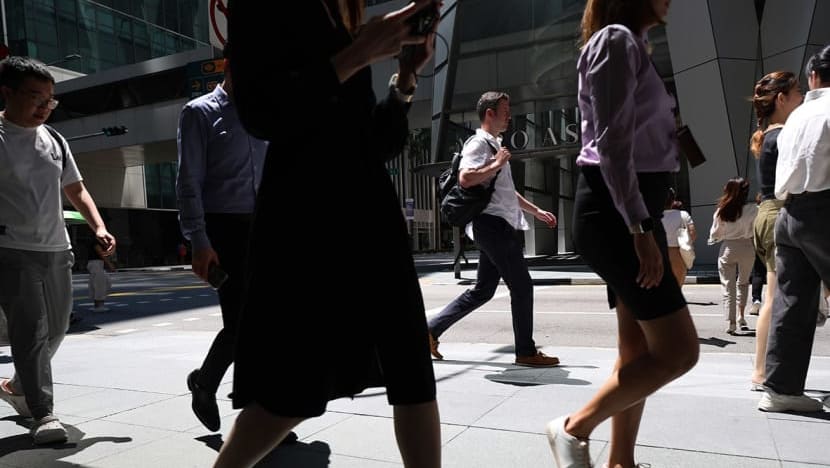
Politics aside, businesses, economists and recruiters who spoke to TODAY agreed on the economic need for foreign manpower. “Foreigners are actually useful, especially in certain high skilled areas where there are just not enough Singaporeans and not enough time to train the Singaporeans to take advantage of the economic opportunities,” said labour economist Walter Theseira. Nonetheless, economic and political observers pointed out that the impact of bringing in foreigners goes beyond dollars and cents, and feathers have been ruffled due to social reasons too. They cautioned that further tightening supply or being even more selective in the foreign talent that the country brings in may not be most feasible as it would risk creating a shortage of skills and blunting Singapore’s competitiveness. As such, to soothe the feelings of unease and unhappiness among the citizenry, the government and other stakeholders will need to address factors that go beyond jobs, such as making sure that Singaporeans feel their needs are sufficiently met in other aspects of their lives as well. At the same time, some experts said, Singapore must also be mindful of one thing: It cannot take for granted its ability to attract such foreign talent in the first place, as adverse global business and geopolitical conditions in recent years are making some companies rethink their placement of staff or business operations here. Any move that makes it more difficult for businesses to hire the global talent that they need for their Singapore operations might be a further disincentive for them to set up shop here and lead them to take their business elsewhere.
Whenever the government moves to tighten the supply of foreign manpower, there will be an outcry from the business community — and this is something that economists and industry watchers can emphasise with. First off, the pipeline of talent here is generally small to begin with, they noted. Ms Lee Pui Kheng of Unispace Singapore, a firm dealing in workplace design, planning and construction, gave the example of her own undergraduate course — project and facilities management at the National University of Singapore (NUS) — where her cohort had only about 130 students.
Half of them specialized in project management while the remainder in facilities management, “and as we know, when you graduate from university, you don’t necessarily pursue a (career aligned to your) course”, she said. “So you can see that the pool is actually getting smaller and smaller,” said Ms Lee, who is principal of technical delivery at the firm. Unispace is an Australia-headquartered global company but its Singapore office has about 20 staff, of which 30 per cent are foreigners. Companies interviewed by TODAY said that workers with more experience or niche skills are naturally in even shorter supply. And for young and small firms like warehousing automation company XSQUARE Technologies, they tend to lose these talents to more established ones, said its chief executive officer Jens Bohnwagner. “To operate effectively, we need both qualifications and experience, and building experience takes time. To bridge this gap, we hire experienced tech professionals from overseas to work alongside our local junior tech talent,” he said. XSQUARE Technologies was set up in 2019 and has around 30 staff here, with seven in 10 being locals.
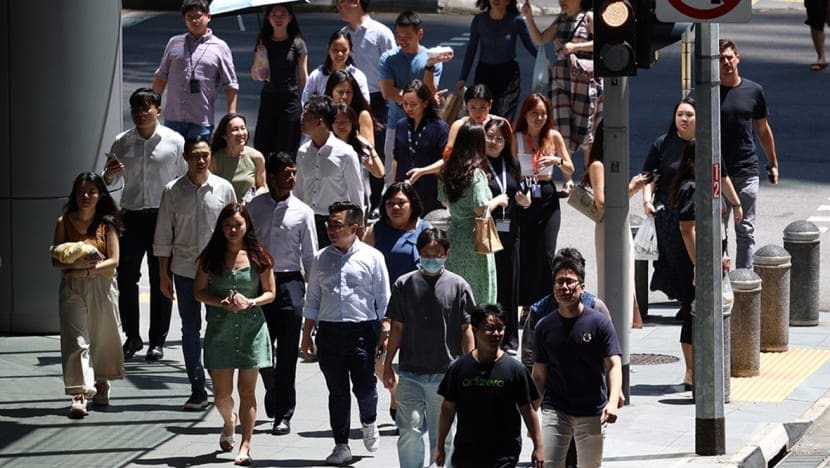
A survey by the American Chamber of Commerce in Singapore (AmCham Singapore) in 2023 found that the ability to hire locals is one of the key manpower issues its member companies are facing. Candidates' lack of technical skills or knowledge for the role is cited as one of the biggest obstacles in hiring locals, leading companies to employ foreigners. AmCham's members comprise a mix of American and other global companies, as well as Singaporean companies. At the national level, not having the foreign worker headcount would naturally lead to a smaller aggregate economic output for the country, all else being constant. Singapore’s total population as of June 2023 was 5.92 million. Out of this, the non-resident population — which includes foreign workers, their dependents and international students — numbered 1.77 million. According to the Singapore Department of Statistics, Singapore's total population grew from 4.59 million in 2007 to 5.18 million in 2011. During that period, the resident population grew 5.75 per cent (3.58 million to 3.79 million) while non-residents grew 38.7 per cent (from 1 million to 1.39 million). Between 2011 and 2015, the total population grew from 5.18 million to 5.54 million. The resident population grew by 2.99 per cent (from 3.79 million to 3.9 million), while non-residents grew 17.1 per cent (1.39 million to 1.63 million). The total population recorded negative growth in 2020 and 2021 due to COVID-19 pandemic disruptions and border lockdowns, which led to some non-residents leaving and some Singaporeans being stuck overseas. But in 2022, the total population grew by 3.4 per cent from the year before (5.45 million to 5.64 million). The resident population grew 2.17 per cent (to 4.07 million) while the non-resident population grew 6.62 per cent (to 1.56 million). Mr Song Seng Wun, an economic advisor at financial service provider CGS International, said that it is also worth noting that any cut in foreign talent would cause a “multiplier” effect too, as each worker is not only a producer in their own industry but also a consumer. “Without the extra mouths that come and live and work here in Singapore, namely the foreigners, who are you opening your restaurants to? Who are you renting your houses to?” he said. He pointed to the COVID-19 pandemic as a real-life illustration of such an impact, where many foreign workers left the country due to border restrictions and many businesses came to a standstill. “It won't be the exact scale, but it gives a flavour of what can happen,” he said.
In discussions over the issue, one often-heard refrain among Singaporeans is that they are fine with foreigners coming here to contribute to the economy — so long as they do not compete with roles that Singaporeans want and are able to fill. By extension, this could mean being even more selective when bringing in foreigners to fill mid to top-level positions. Another corollary to such a view is that Singapore companies should hire foreigners only for jobs that are less desirable to its citizens — mostly the lower-skilled ones — and reserve the top-tier jobs for citizens. Economic experts as well as talent recruiters like Mr Kenji Naito, group chief executive officer of Reeracoen, said that while it may be theoretically possible to be highly selective when hiring foreign talent for senior positions, this is not practical or beneficial in the long term. “Further restrictions could risk creating talent gaps that might hinder innovation and competitiveness. Striking a balance between protecting local jobs and attracting essential foreign talent is crucial,” said Mr Naito. The suggestion that higher-value jobs should be kept exclusively for locals would be problematic, too. First, with the finite local headcount that is also shrinking due to the low birth rate, there could be a limit to the number of industries Singapore can tap if the industry leaders are to only comprise local talent.
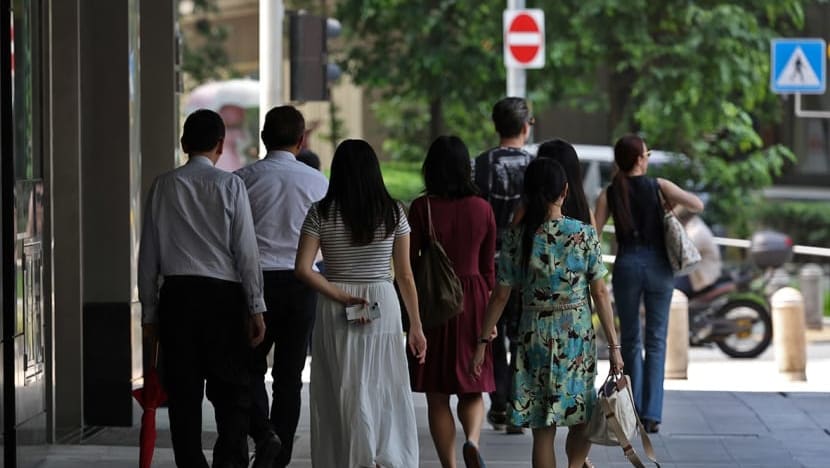
As new growth areas of business sprout rapidly, it may be harder to project with “confidence” the talent and skill sets relevant for future growth like Singapore has traditionally tried to do all these years, said Mr Song. In turn, it would be difficult for Singapore to prepare a pipeline of such talent in advance. And if Singapore is not open to taking in relevant foreign talent at the top end to quickly plug that gap, it will yet again risk missing out on opportunities presented by new growth areas.
Apart from losing the Aljunied GRC, the 2011 General Election also saw the ruling PAP getting its lowest vote share since the Republic’s independence — 60.1 per cent — with the issue of migrants’ influx widely viewed as the lightning rod for voters’ unhappiness with the government.
Ensuring talent quality
Shielding residents from unfair competition
Facilitating integration
Numerous measures have been introduced or reinforced since then to address the dissatisfaction among locals.
Observers said that on the whole, the various policies are designed to strike a balance between having a sufficient foreign workplace that is both of high quality and complementary to Singapore workers and assuaging Singaporeans' concerns about their livelihoods and future.
Yet it is debatable how far these policies have succeeded in shifting Singaporeans' attitudes towards foreign workers.
A survey of 2,000 Singapore residents released in 2020 found that seven in 10 want strict limits on the number of foreigners entering the country.
Amid the continuing debate, two questions whose answers could offer Singaporeans a better picture would be these: How has the bringing in of foreign manpower impacted local employment and how have the control measures over the years improved the situation?
Then visiting research fellow at the Adam Smith Center Singapore, Mr Donovan Choy, pointed out in a TODAY commentary in 2021 that the percentage of non-residents among the total population here had grown from about 14 per cent in 1995 to 29 per cent in 2020.
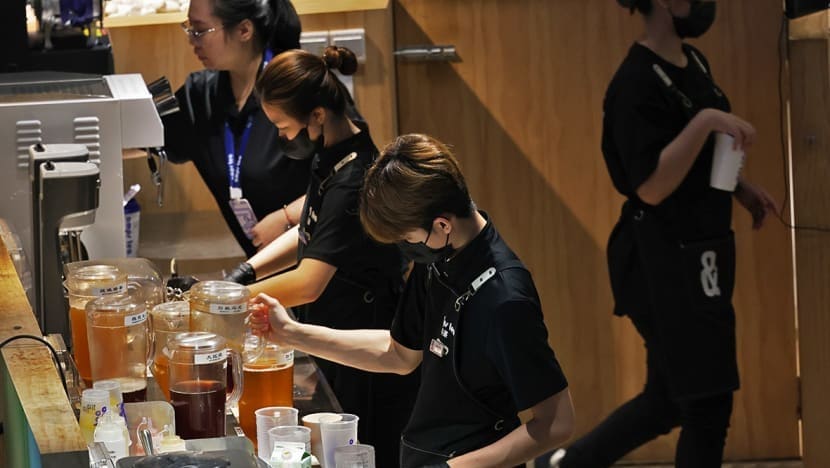
Yet the unemployment rates of Singaporean citizens and permanent residents had remained relatively stagnant over the same period, never breaking 5.2 per cent.
“Contrary to popular belief, immigrant inflows to Singapore are not throwing citizens into mass unemployment,” he wrote.
Instances of discrimination experienced at work or during job search, including over one’s nationality, seemed to have also dipped, according to the Ministry of Manpower’s Fair Employment Practices report in July 2023.
Specifically for discrimination based on nationality, the proportion of resident job applicants reporting such an experience declined from 14.2 per cent in 2018 to 6.2 per cent in 2021 and 4.0 per cent in 2022.
Despite the government’s continuing efforts to promote and enhance the “Singaporean core” in the workforce — and even amid acceptance by many Singaporeans that the country needs foreign talent — why do tensions persist over this issue?
When it comes to emotive issues, what people perceive can easily be taken for granted as facts, experts told TODAY.
“So the perception that foreigners are preventing Singaporeans from being promoted or taking away their jobs, those very quickly become regarded as ‘facts’,” said Dr Tan from SMU.
“So even as the government has been trying its best to address concerns, it may not be seen as sufficient.”
More importantly, experts pointed out that job competition is but one part of the tensions.
Assoc Prof Theseira said that given the fact that Singapore is selective of the foreign talents it brings in, by default these workers will be earning higher than the average Singaporean.
Seeing foreigners able to better afford coveted things like cars and private homes, for example, would thus fuel a perception of inequality, he said.
For this reason, the government has also rolled out measures outside of the labour market to address these concerns. These include beefing up public infrastructure capacity, as well as dampening a hot private housing market, and disincentivising foreign investment in the latter.
The boosting of public infrastructure is also necessary because Singapore faces a similar conundrum with foreign manpower at the other end of the scale, given that a large number of blue-collar migrant workers are needed to do the jobs that Singaporeans shun.
Sociologist Tan Ern Ser from NUS said: “Competition can produce tension and conflict; hence, the need to ensure that there is enough of the things that matter to Singaporeans at the workplace, schools, and neighbourhoods.
“And from this starting point, to facilitate collaboration and mutual understanding between Singaporeans and the foreigners in our midst.”
Beyond just top-down policies, it is important for locals and foreigners themselves to form bridges between one another, said Dr Leong Chan-Hoong, a Senior Fellow for Social Cohesion Research at the S Rajaratnam School of International Studies.
“The shared narrative, the shared experiences (between locals and non-locals) is less articulated in public,” he said, adding that this narrative is important as we continue developing as a global city-state.
“We need to move beyond ‘how much you get, how much I get’. It's about how much we are doing this together? And I think this is the narrative that is missing.”
A possible way to do this is to encourage ground-up groups that aim to address problems that are “universal” or that both locals and non-locals can empathise with, such as tackling parenting challenges or even second-hand smoke.
This would also help to strengthen the idea that the non-locals are here to contribute and not just here to take up jobs.
An MCCY spokesperson said: “For integration to be effective and sustained, it needs a whole-of-society effort — foreigners to actively contribute to the local community and adapt to local culture and norms, and Singaporeans to also be inclusive, patient, and willing to learn from foreigners.”
On top of implementing measures that sought to allay Singaporeans' concerns, the government has also repeatedly stressed to the public the importance of foreign manpower to Singapore, though how it delivers the message seems to have changed slightly over time, some observers noted.
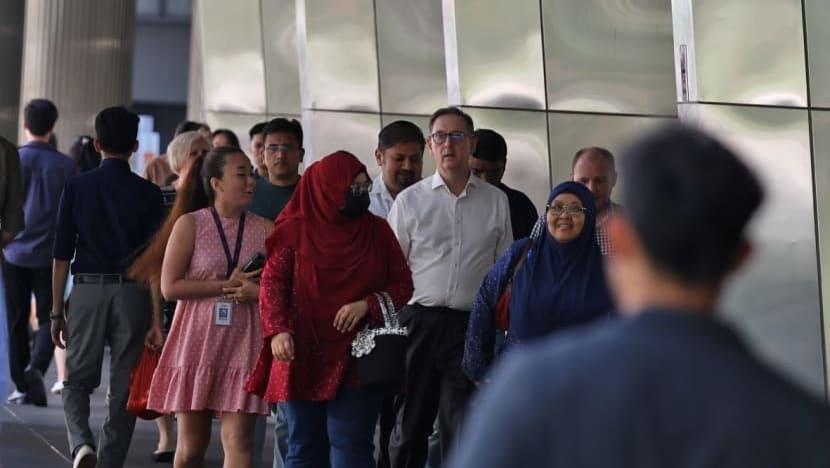
For example, true to his character, the late Mr Lee Kuan Yew never minced words when it came to migrants and foreign talent.
In a speech in 1980 commenting on the work attitude of some Singapore-born labour which he found lacking, Mr Lee said that better quality foreign labour “can put the spurs on the hinds of Singaporean”, while immigration of such talent “will make Singaporeans sit up and try harder”.
When asked during an engagement session with tertiary students in 2003 about whether it was worth re-examining the foreign talent policy, Mr Lee, who was then Senior Minister, unequivocally said that changing the policy will “undercut [Singapore’s] capability to grow and expand”.
“There are 4 million (people) in Singapore, 1 million are foreigners. You get rid of that 1 million foreigners, you will be unemployed. Many of you will not find jobs,” he said.
In more recent times, political leaders have time and again explained the need for foreigners to supplement the local workforce. But in the same breath, they would also reiterate how locals are being prioritised or at least not sidelined, political observers said.
They also noted that the shift to emphasise the second half of the message — prioritising locals — was more apparent post-2011 General Election.
Dr Tan of NUS said the messaging about the need for foreign manpower today still remains “quite stark”, adding that this complements the message about prioritising Singaporeans.
“Prioritising Singaporeans and welcoming of foreign labour are not mutually exclusive,” he said.
Meanwhile, SMU’s Assoc Prof Tan said that it is not easy for the government to send a starker message that Singapore can't survive without foreigners.
“The political climate today makes it challenging to put forth the message that we need foreigners to augment the capacity and capability of our workforce in terms of both quantity and quality.”
When asked if there might be a downside to what could be deemed as a softer messaging, he agreed.
“An undue focus on what’s been done to ‘protect’ Singaporeans’ interests can easily become one of pressing the government to adopt protectionist measures,” he said.
Political analyst Felix Tan also cautioned against “giving the wrong signals to potential investors”.
He added that to truly address the foreign manpower conundrum requires more than just government policies and Singapore society as a whole “needs to do much more” to better integrate non-locals and locals.
Amid the angst over the number and type of foreign talents that Singapore needs, it is also important to be cognisant of the fact that Singapore may one day lose its lustre as the city of choice for foreigners seeking to work outside of their countries.
Manpower and economic experts were already pointing out a few years ago that while Singapore remained attractive, other cities were catching up in their efforts to woo coveted global talent.
Recruiters were saying then that some executive candidates already had multiple offers on hand by the time they were interviewed for a position in Singapore. One such headhunter was advising its clients to be prepared as there were “an awful lot of offers rejected”.
In the last couple of years, rising rentals and costs of living have also led some expatriates to leave Singapore.
Last year, 70 per cent of about 270 companies said they were ready to relocate their staff out of Singapore if operating costs were left to rise unabated, according to a survey done by the European Chamber of Commerce, Singapore.
Economic nationalism and protectionism may also pose a threat to investment inflows into Singapore, business experts and analysts told CNA in April last year.
Ms Selena Ling, head of treasury research and strategy at OCBC Bank, told TODAY: "The competition for foreign direct investment and talent is real and intensifying due to the ebb and wane of many factors including cost of living, geopolitics, growth industries, attractiveness of the place to work and live and so on."
However, she also added: "Given the holistic and forward-looking — some may say far-sighted — policymaking framework here, dealing with the cut and thrust of competition for talent and foreign direct investment is not new."
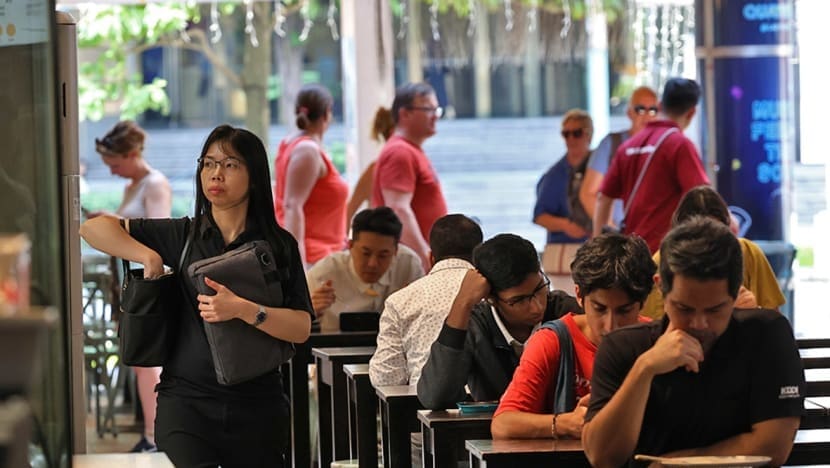
In April this year, Nikkei Asia reported how multinational corporations are increasingly relocating some of their regional headquarter functions away from Singapore.
Costs and tax advantages of neighbouring countries as well “concentration of production sites” in an alternative country were cited as reasons.
Recruiters who spoke to TODAY recently also noted that some of their clients had concerns about maintaining their headcount here.
“These concerns primarily revolve around rising operational costs and the challenges posed by global supply chain disruptions,” said Mr Naito of Reeracoen.
Separately, according to latest figures, the Economic Development Board in 2023 attracted investment commitments amounting to S$12.7 billion (US$ 9.4 billion) in fixed asset investment.
This is much lower than the record S$22.5 billion attracted the year before, but is “in line with past trends”, said the board.
On a brighter note, the 2023 edition of The Global Talent Competitiveness Index by Insead found that Singapore has retained its second place on the annual index.
Mr Victor Mills, chief executive of Singapore International Chamber of Commerce, said: “Companies will always decide what’s best for them in terms of location based on their needs.”
As for Singapore, attributes that it still maintains are the rule of law, a fair and progressive tax regime, access to finance and the region, a safe and pleasant place to live and political stability, he said.
Dr Lei Hsien-Hsien, chief executive officer of AmCham Singapore said that by and large, the interest and commitment of American companies to Singapore remains business-as-usual, if not better.
She cautioned against overblowing cases of some individual companies leaving Singapore, adding that such cases need to be looked at "on a deeper level" to understand their individual considerations for closing shop here.
Still, the experts interviewed by TODAY agreed that further restricting the inflow of foreign talent would only serve to make operating here a tad more onerous for global companies — a step that should not be taken unnecessarily in light of the shifting global dynamics and competition.
Assoc Prof Theseira said there is "a real risk" that some companies, if faced by shortages of talent or too many restrictions in bringing in manpower, will consider putting their investment elsewhere.
"So the question for Singapore must be, how many of these things will we have to say no to, or will say no to us, before we start to lose our competitive edge?"
The article was originally published in TODAY.